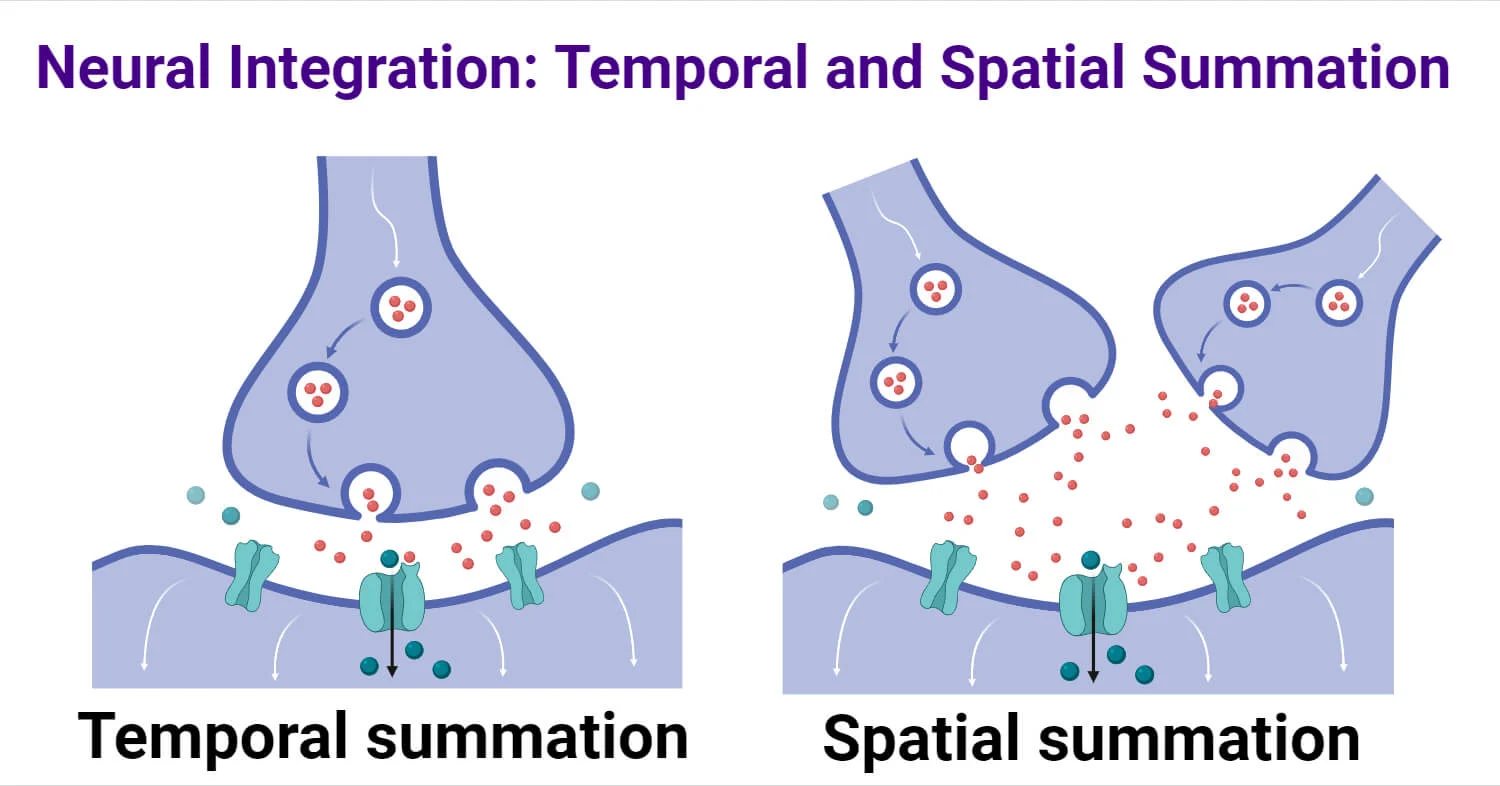C2.2 Neural Signalling
1/15
There's no tags or description
Looks like no tags are added yet.
Name | Mastery | Learn | Test | Matching | Spaced |
|---|
No study sessions yet.
16 Terms
Define Neurons; How is it different from Nerves?
Neurons = Individual Nerve Cells that carry electrical impulses around our bodies; Neurons are synonyms for Nerve Cells
Nerves are bundles of axons (of neurons)
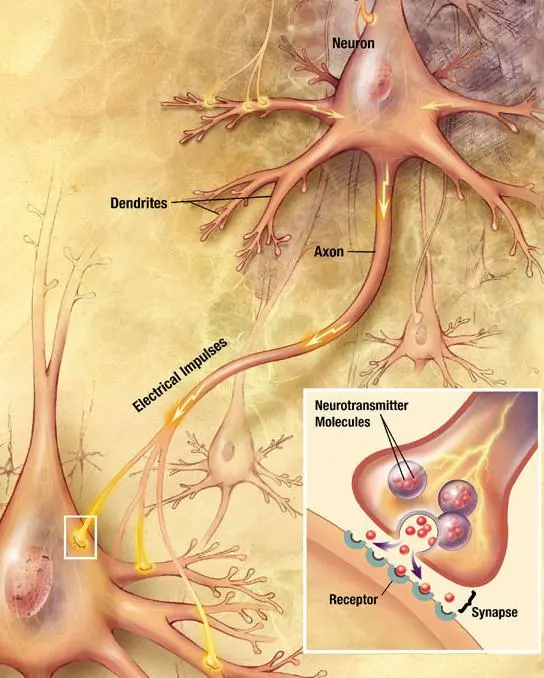
What is the Central Nervous System & what is the Peripheral Nervous System?
The Central Nervous System = Includes the Brain & Spinal Cord
The Peripheral Nervous System = Includes all other nerves not part of the Central Nervous System; Sensory Neurons, Motor Neurons,
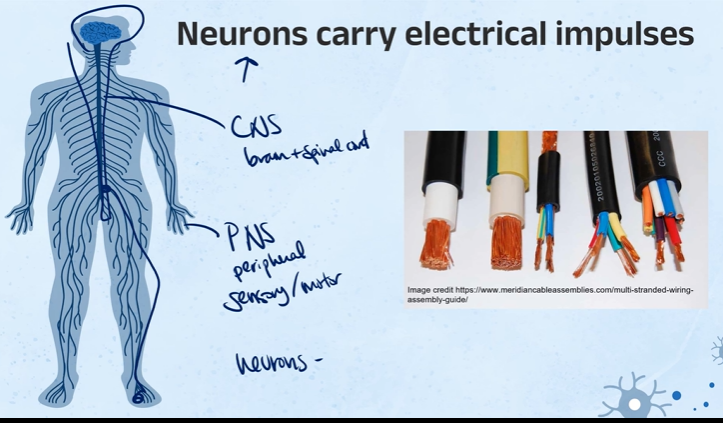
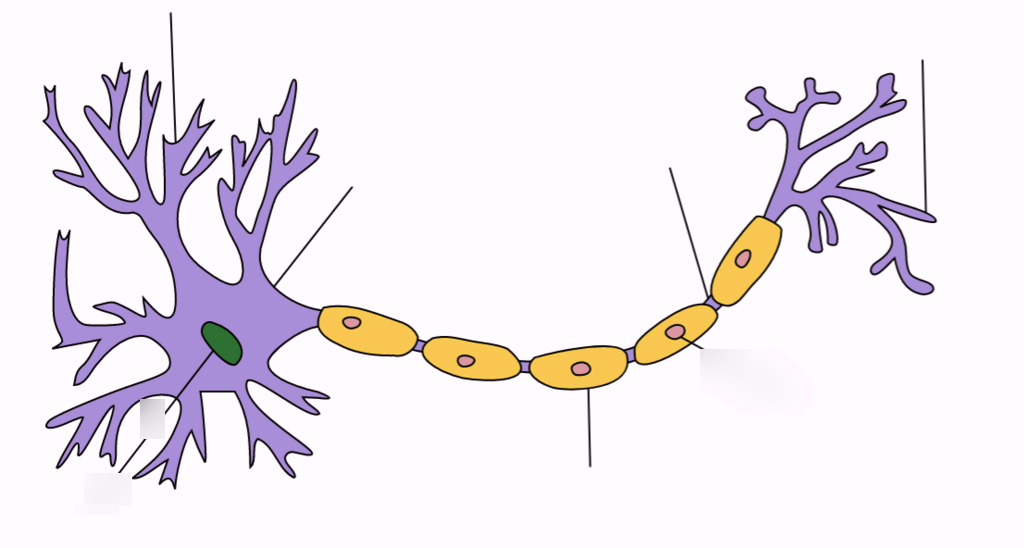
Label this diagram of a neuron:
Dendrites = Collect information from the environment, have a large surface area
Axon
Myelin Sheath = Insulates the axon and allows for saltatory electrical conduction
Soma = Cell body containing a nucleus
Ends in Synapses, otherwise known as Axon terminals. The Axon terminals contain terminal buttons with neurotransmitters held inside their vesicles
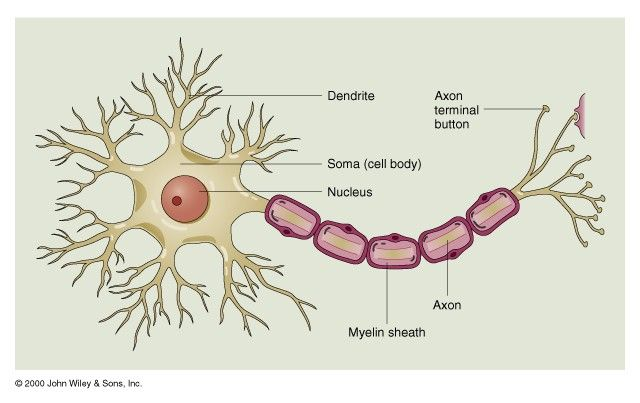
Why are myelinated sheaths valuable? Which cells make up the myelin sheath?
The myelin sheath is made up of schwann cells, which contain a lot of lipids; These lipids act a lot like insulators, allowing the electrical impulses to undergo saltatory conduction, helping them travel a lot faster!
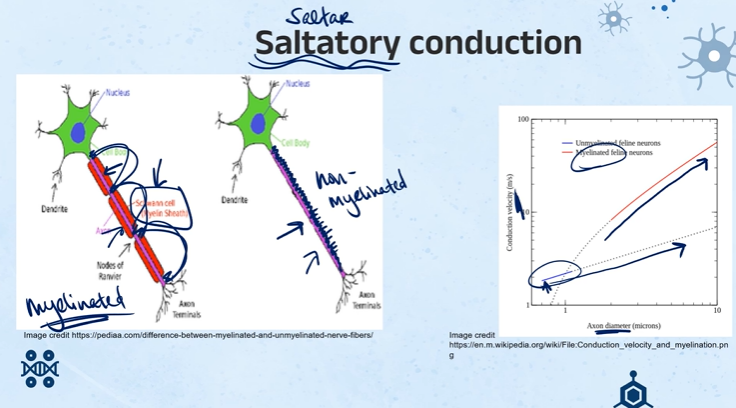
Zoom into the synapse, where the axon terminal, synaptic cleft and dendrites of the next neuron are located
What’s the difference between the axon terminals and the synapse?
The Axon terminal is the end of a neuron’s axon, where neurotransmitters are stored and released
The Synapse is the entire connection between two neurons that includes:
The axon terminal
The Synaptic Cleft (the small gap between neurons)
The dendrites or cell body of the neuron receiving the signal
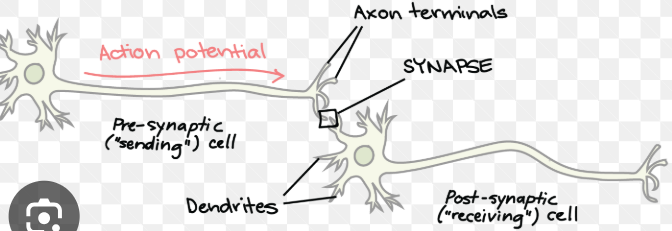
What does the sodium potassium pump do to set up the neuron for electrical signaling? Then what happens for the electrical signal to actually propagate?
The sodium potassium pump doesn’t actually contribute to the process of neurons firing, but it does help maintain the resting membrane potential of the cell (meaning the electrical charge difference between the inside and outside of the cell) at around -70mv IN NEURONS.
It works using Ions, specifically Na+ and K+. The sodium potassium pump is embedded in the cell membrane of excitable cells like neurons and muscle cells, which is where this process happens:
Remember: pumps are a part of active transport
There is a currently a higher concentration of Na+ ions inside the cell, rather than K+ ions, but the key point is that, in a resting state, a healthy cell naturally has a higher Na⁺ concentration outside and a higher K⁺ concentration inside.
How it starts:
3 Na+ ions are already bound to 3 sites on the inside of the cell.
When ATP binds to the pump and it is hydrolyzed, it releases Pi (inorganic phosphate), forming ADP. The Pi attaches to the sodium potassium pump, causing it to undergo a conformational change, that releases the Na+ ions from their 3 binding sites.
Then, this allows the sodium potassium pump to stay open, allowing 2 K+ ions from the outside to flow into the pump and bind to two sites on the extracellular side. The phosphate group is removed, returning the pump to its original shape.
Since 3 Na+ ions were released, and only 2 K+ ions were brought in, this means that we created a short-lived negative charge (because of this difference from 3+ to 2+ charge) inside the cell
Our neuron cells now have a resting membrane potential (before a neuron fires) of about -70mV, because we pumped Na+ out and K+ into the cell, creating a slightly negative charge. This essentially sets up the neuron for releasing its action potential.
Whenever there’s a stimulus, it causes an action potential to be released, which
triggers voltage-gated Na+ channels to open in the cell membrane of the neuron.
This causes all of the Na+ ions we pushed out go back into the cell, increasing the + charge inside of the cell, resulting in “Depolarization”.
Simultaneously, the K+ we just brought in gets released, so now we are losing + charge, and the cell is said to be “Repolarized.”
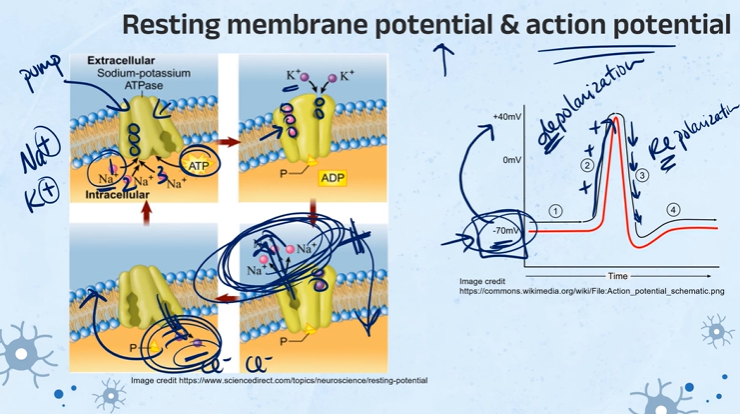
Here’s a simpler version of how an electrical signal is propagated down the neuron (from the last card):
How It Works:
The pump moves 3 Na⁺ out and 2 K⁺ in, creating a negative charge inside the neuron.
This resting state (-70mV) allows neurons to fire action potentials when stimulated.
When a Neuron Fires (Action Potential):
A stimulus triggers voltage-gated Na⁺ channels to open.
Na⁺ rushes into the neuron, making it more positive (Depolarization).
Voltage-gated K⁺ channels open, letting K⁺ leave, restoring negativity inside (Repolarization).
The sodium-potassium pump resets ion levels so the neuron can fire again.
What happens once the action potential actually reaches the end of the neuron (aka the presynaptic neuron (comes before the synapse))
When an action potential reaches the axon terminal on the presynaptic neuron, voltage-gated Ca2+ ion channels open, which allows Ca2+ ions to enter.
When Ca2+ ions enter, it triggers the vesicles of the synapse, containing neurotransmitters like ACh (acetylcholine) to move to the membrane. Vesicles fuse to the membrane through exocytosis, releasing the neurotransmitters into the synaptic cleft.
Then the neurotransmitters bind to receptors on the membrane of the postsynaptic neuron. This causes Na+ channels to open, allowing Na+ to enter. If enough Na+ enters, then this triggers a new action potential in the post-synaptic neuron.
Then enzymes like Acetylcholinestearase AChE come in to break down the neurotransmitters, which get reabsorbed by the pre-synaptic neuron to be reused.
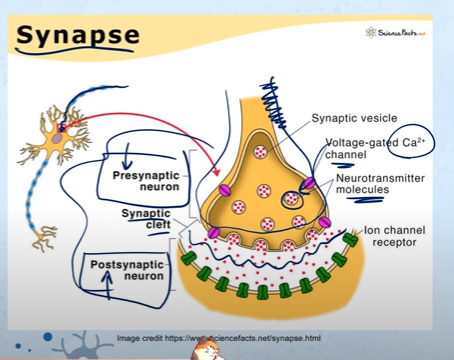
What are exogenous and endogenous agonists?
Endogenous agonists are natural neurotransmitters produced by the body that bind to specific receptors.
Exogenous agonists are external chemicals (often drugs) that mimic neurotransmitters and also bind to receptors on the postsynaptic neuron, triggering a similar response.

Can you give an examples of two exogenous agonists?
Neonicotinoids (A type of insectiside)
Neonicotinoids are chemicals found in pesticides, that are designed to bind to acetylcholine receptor sites on the post-synaptic neuron in insects to prevent nerve impulses
Because enzymes cannot break these insecticides down, affected insects can’t transmit nerve impulses, so they become paralyzed and die
Cocaine
Cocaine is released from the presynaptic neuron into the synaptic cleft. It binds to dopamine receptors on the postsynaptic neuron, increasing feelings of euphoria.
Normally, dopamine transporters (DATs) on the presynaptic neuron would remove excess dopamine to reset the system, but unfortunately, cocaine blocks these transporters, preventing them from being broken down and reabsorbed into the presynaptic neuron.
(dopamine is shown accumulating in blue in the synaptic cleft)
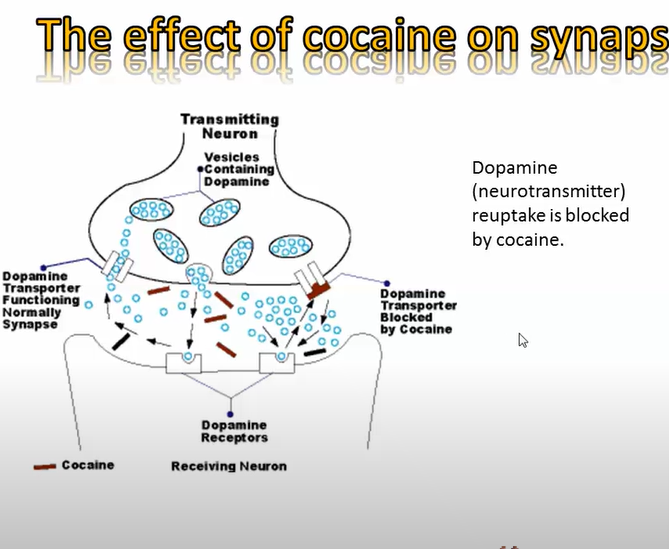
What are IPSPs and ESPSs?
EPSPs (Excitatory Postsynaptic ACTION Potentials):
Increases the likelihood of an action potential by depolarizing the neuron (making it more positive).
Open Na⁺ channels, allowing Na⁺ to enter, bringing the membrane closer to threshold.
makes the post synaptic neuron more likely to generate an action potential
IPSPs (Inhibitory Postsynaptic ACTION Potentials):
Decrease the likelihood of an action potential by repolarizing the neuron (making it more negative).
Open K⁺ channels, allowing K⁺ to leave, preventing the neuron from reaching threshold.
makes the post synaptic neuron less likely to generate an action potential
what’s the difference between repolarization and depolarization?
Depolarization → "Charging up"
Think of a neuron getting excited and becoming more positive inside.
Na⁺ rushes in, making the charge go from negative (-70mV) to positive (+30mV).
Repolarization → "Resetting"
The neuron calms down and returns to its resting state.
K⁺ exits, restoring the negative charge inside (-70mV).
What is the concept of “all or nothing”?
If a neuron reaches its threshold membrane potential of 55mV, it fires completely; but if it doesn’t reach this threshold, then no action potential occurs, and there is NO FIRING.
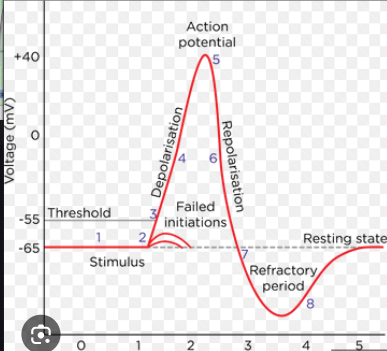
briefly describe what’s going on here:
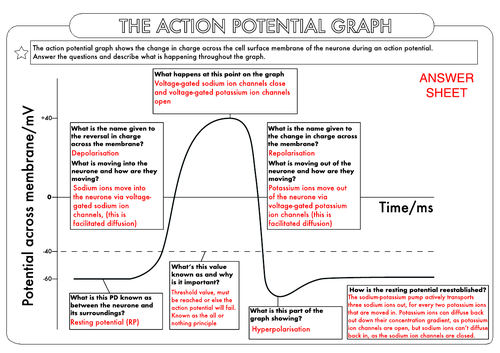
What is spatial and temporal summation? Which is more powerful?
Temporal Summation = When multiple impulses arrive rapidly at the same synapse, and continue releasing neurotransmitters until the threshold is reached
Spatial summation = When multiple neurons are stimulating the same post synaptic neuron at the same time by releasing more and more neurotransmitter, causing the neurotransmitter to accumulate and trigger an action potential
Spatial summation is more powerful
